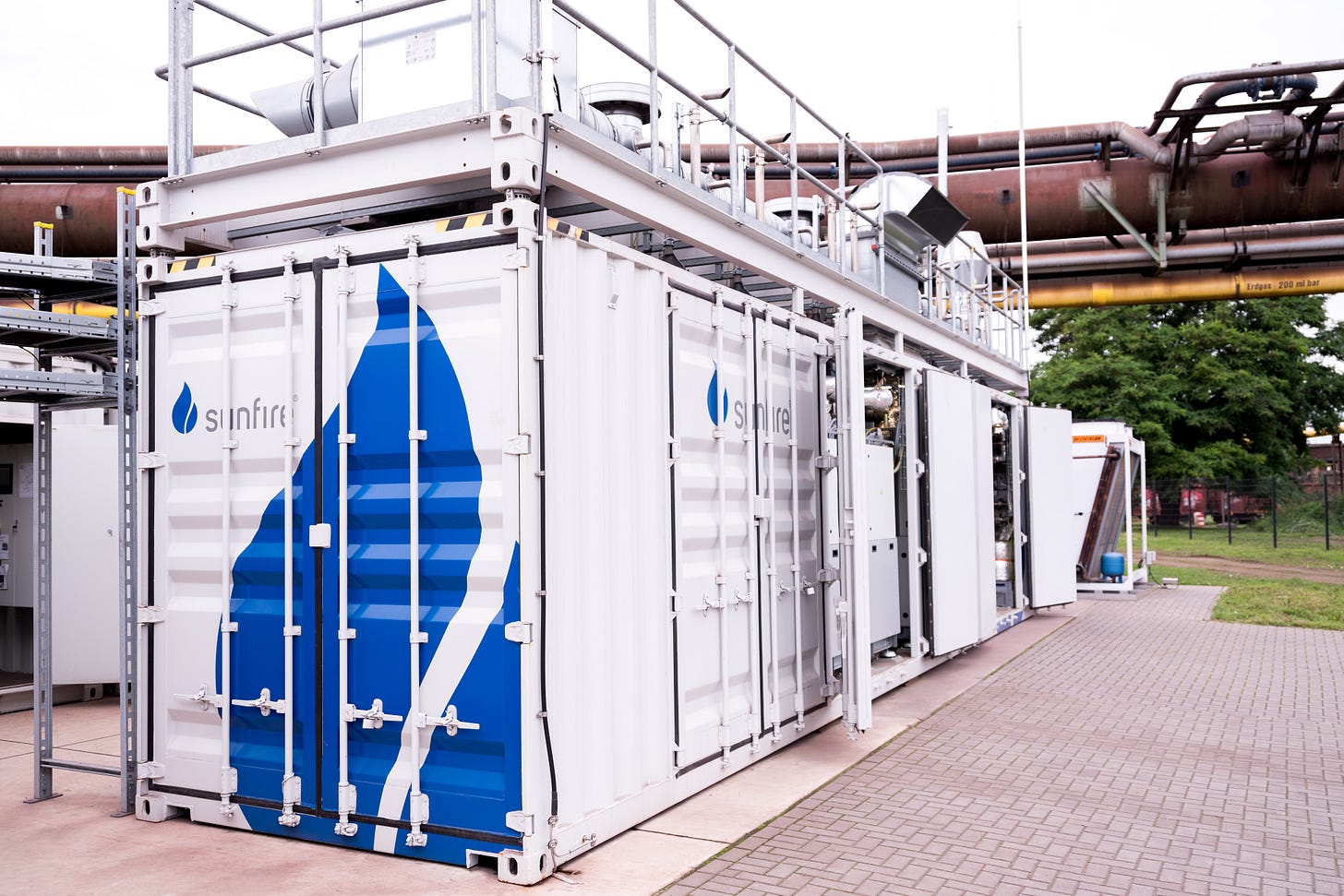Efficiency! Who doesn’t strive for greater efficiency? Being efficient is considered a moral virtue in our society, akin to washing your hands with soap or not going overboard with the Hai Karate while riding public transportation. But you should always be immediately skeptical if presented with a claim of greater than 100% efficiency, especially from someone selling or advocating for a technology solution.
The Clean Air Task Force (CATF) bills itself as a “non-traditional, fact-based environmental organization.” I recently read a 2023 CATF report on solid oxide electrolyzer cells (SOEC) and was instantly struck by the following paragraphs:
“If there is a source of high-grade heat, the steam that is destined for electrolysis can be heated to or near the operating temperature of the electrolyzer. This allows the electrolyzer to draw in heat from its surroundings, which results in endothermic operation. Depending on the temperature of the steam and the temperature of the electrolyzer, endothermic operation could theoretically reduce electricity demand by another 0.5 kWh/Nm3 of H2 (Figure 15). In endothermic operation the electrical efficiency of the reaction at the cell level can be understood as exceeding 100% (HHV basis). This is because the electrolyzer would be producing more in hydrogen energy than it would be consuming in electrical energy.
Altogether, leveraging a high-grade waste heat source at 600°C to its maximum, that is to evaporate water and heat the stack, could theoretically lower the electricity required to produce hydrogen to around 2.7kWh/Nm3 or 30 kWh/kg, which would be equivalent to 131% efficiency at the cell level for the higher heating value (HHV) of hydrogen or 111% cell efficiency for the lower heating value (LHV) of hydrogen. Stack efficiencies, excluding balance of plant, will be only marginally less than cell efficiencies due to non-ideal fields and flow (e.g., eddy currents).” [emphasis added]
Source: Openverse
The key to understanding these statements is recognizing what is, and what is not, included when defining and computing “efficiency.”
First, let’s review what an electrolyzer does. Electrolysis involves applying an electric current to break molecules apart into positively and negatively charged ions, whereafter the ions rearrange themselves into secondary, electrically neutral products. Ions migrate from one side of the electrolyzer to the other across a barrier called an electrolyte. The electrolyte is often a liquid, but it can also be a solid. The CATF report in question concerns the use of solid oxide (ceramic) electrolytes. Ions can squeeze through tiny defects in the crystal lattice structure of some ceramic materials, but gases are trapped. If the electrolyzer is designed to produce hydrogen by splitting water molecules, pure oxygen is produced on one side (the anode) and pure hydrogen on the other (the cathode). If, in addition, the electricity used to power the electrolyzer is generated from a low-carbon energy source such as solar or wind, then the product is termed “green hydrogen.” Virtually all hydrogen produced today is “gray,” synthesized via a chemical process known as steam methane reforming (SMR).
Why SMR? Because it’s cheap. Green hydrogen is expensive. Hence a drive to improve the efficiency of electrolyzers. But claiming that a device is more than 100% efficient is misleading. In this case, the CATF report authors are taking credit for large quantities of high temperature heat being available from some external industrial process. If one preheats SOEC feedwater into high temperature steam (around 600 degrees Celsius) and then calculates the amount of electricity needed to produce a given quantity of hydrogen, the ratio of stored hydrogen energy output to electrical energy input may indeed be greater than 100%. That is a tad bit disingenuous, because this convenient heat source is not free. It may be waste heat from a steel mill, or a cement plant, but someone somewhere burned fuel or used electric power to generate that heat before it arrived at your electrolyzer. (This reminds me of a former classmate who once remarked that he was not concerned about how much air conditioning he used during the summer because his apartment lease included “all utilities paid.”)
A similar issue arises in quoting the effectiveness of heat pumps. You may see claims of heat pumps being “300% efficient” or “generating three times as much heat as they consume in electrical energy.” Heat pumps are not commonly rated in terms of thermal efficiency on a scale of 0 to 100%. Rather, they are rated using something called a heating performance factor (HPF). If you aggregate performance over the entire fall and winter heating period, you can express this factor on a seasonal basis. Remember, though, that the electricity used to run your heat pump’s compressor was generated at a power plant. Whether it was a solar or wind farm, a natural gas turbine, or a nuclear reactor, the efficiency of that plant is less than 100%. A typical thermal power plant efficiency is in the ballpark of 33% to 45%. Solar panels are around 20% efficient at generating electricity from sunlight. Turbines capture around half of incoming wind energy and lose additional energy in the gearbox and generator. The upshot is that it takes around three units of heat to generate one unit of electricity. Your heat pump consumes that unit of electricity and generates three units of heat.
If you travel abroad frequently, you may be in the habit of exchanging your domestic paper money for foreign currency. On the way home, you convert any unused foreign currency back into your local tender. Every time you make an exchange, you pay a fee. Thermodynamics imposes the physical equivalent of an exchange fee on all energy conversions, and there is no such thing as a 100% thermodynamically efficient process. It is certainly helpful to wring as much use out of available heat sources as one can when designing large, expensive energy conversion systems like SOEC. But don’t be lulled into a false sense of thinking that you can get something for nothing.


